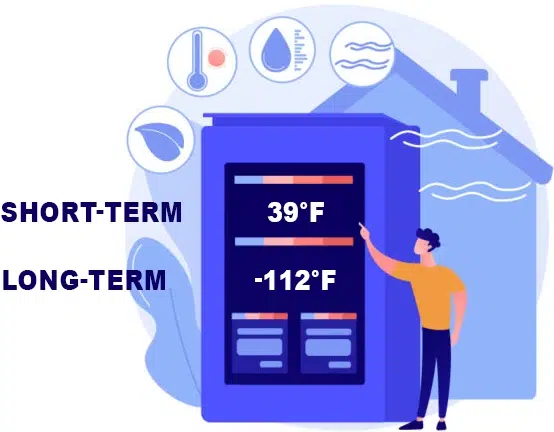Peptide Storage Guidelines

At Regentide, we prioritize the integrity and stability of our peptides. Proper storage practices are essential to maintaining peptide quality for research purposes. The following guidelines outline best practices for peptide storage, helping to prevent degradation, contamination, and oxidation.
Storage Best Practices To ensure long-term stability, peptides should be stored in a cold, dry, and dark environment.
Short-term storage (weeks to months): Refrigeration at 4°C (39°F) is generally sufficient. Lyophilized peptides remain stable at room temperature for several weeks but should be kept refrigerated whenever possible.
Long-term storage (months to years): For extended storage, peptides should be kept in a freezer at -80°C (-112°F) to maintain their stability.
Avoid freeze-thaw cycles: Repeated thawing and freezing can degrade peptides. Aliquoting peptides into smaller vials can help prevent this issue.
Avoid frost-free freezers: These freezers undergo periodic temperature fluctuations, which may compromise peptide stability.
Preventing Oxidation and Moisture Contamination Peptides are highly sensitive to air and moisture exposure, which can cause degradation.
Allow peptides to reach room temperature before opening to prevent condensation.
Minimize exposure to air by keeping containers sealed as much as possible.
Store peptides under dry, inert gas (such as nitrogen or argon) when possible to prevent oxidation. Peptides containing cysteine (C), methionine (M), or tryptophan (W) are especially prone to oxidation.
Use aliquots to minimize handling and reduce the risk of contamination.
Storage of Peptides in Solution Peptide solutions have a significantly shorter shelf life than lyophilized peptides. They are also more susceptible to bacterial degradation.
If peptides must be stored in solution, use sterile buffers at pH 5-6.
Aliquot peptide solutions to minimize freeze-thaw cycles.
Store solutions at 4°C (39°F) for up to 30 days. For long-term storage, freezing is recommended.
Choosing the Right Storage Containers Selecting appropriate containers is crucial for maintaining peptide stability.
Use chemically resistant, airtight containers.
Glass vials offer superior chemical resistance, while polypropylene vials provide durability.
Peptides are often shipped in plastic vials to prevent breakage but can be transferred to glass if necessary.
Key Takeaways for Peptide Storage
Keep peptides in a cold, dry, and dark environment.
Avoid repeated freeze-thaw cycles.
Minimize exposure to air and light.
Avoid long-term storage in solution.
Aliquot peptides to match experimental needs.
Following these guidelines will help ensure the stability and integrity of peptides, supporting reliable research outcomes.
